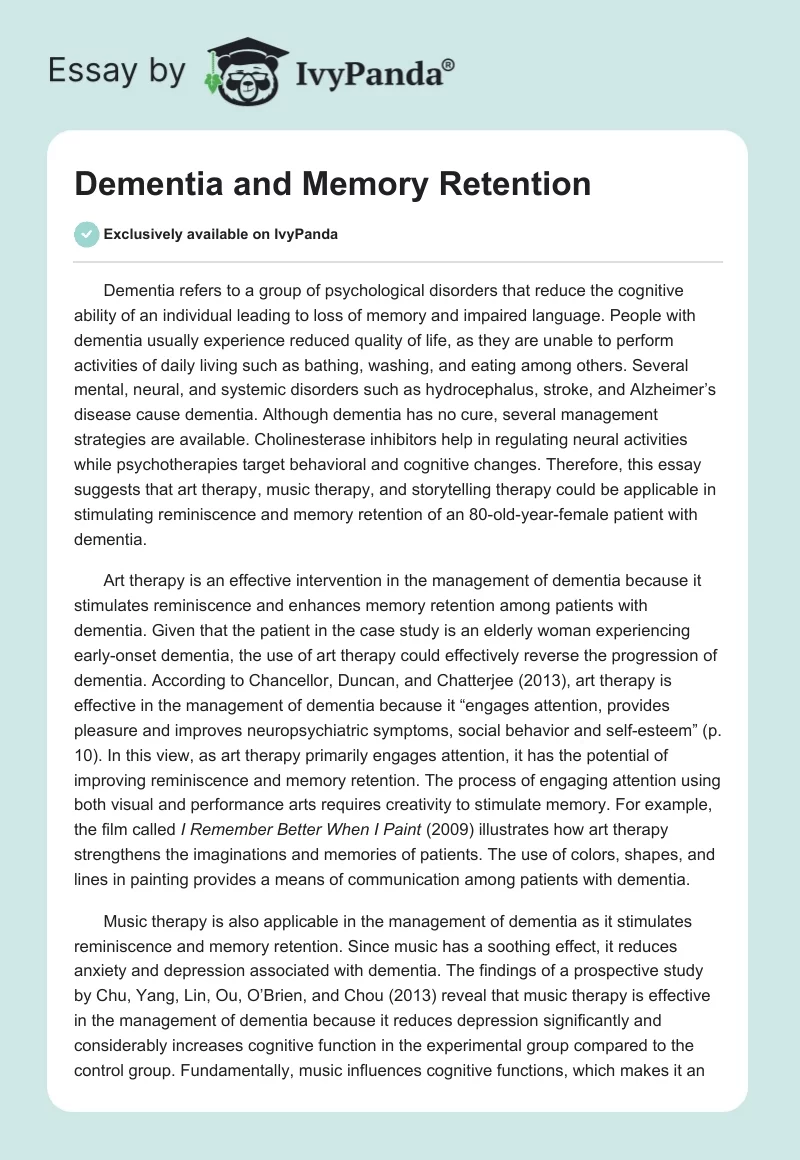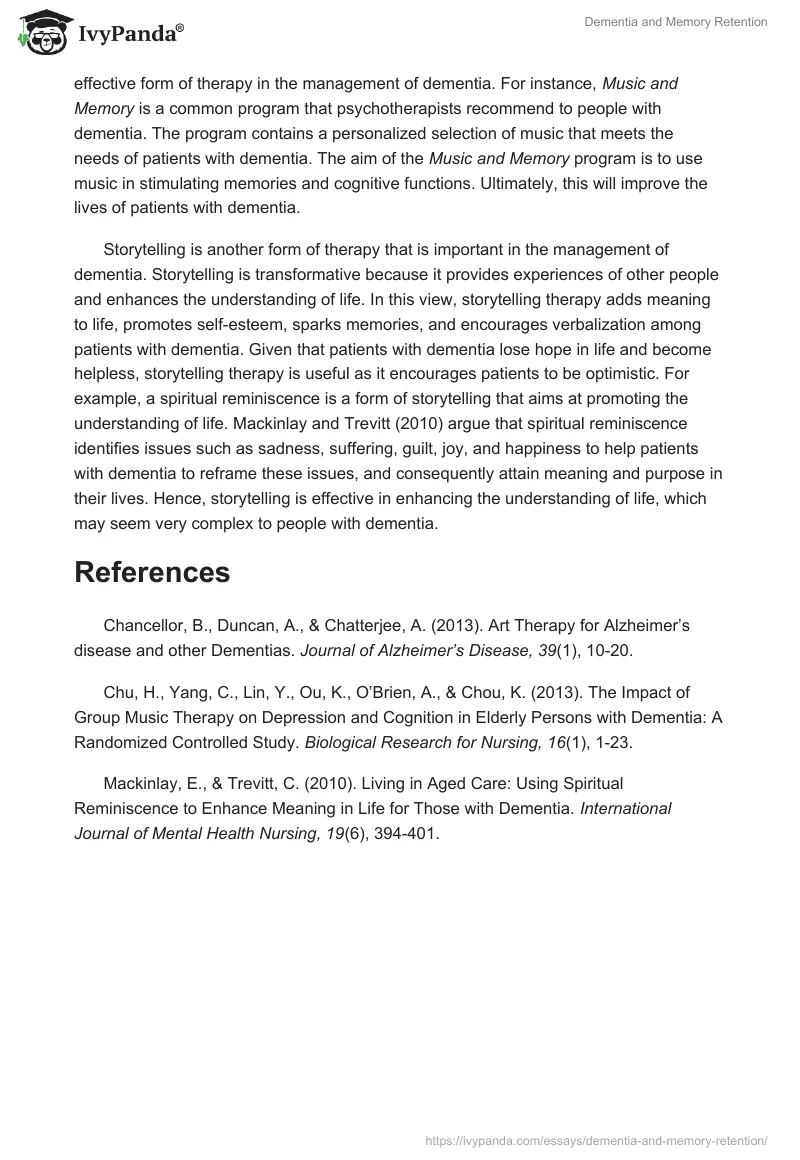Dementia refers to a group of psychological disorders that reduce the cognitive ability of an individual leading to loss of memory and impaired language. People with dementia usually experience reduced quality of life, as they are unable to perform activities of daily living such as bathing, washing, and eating among others. Several mental, neural, and systemic disorders such as hydrocephalus, stroke, and Alzheimer’s disease cause dementia. Although dementia has no cure, several management strategies are available. Cholinesterase inhibitors help in regulating neural activities while psychotherapies target behavioral and cognitive changes. Therefore, this essay suggests that art therapy, music therapy, and storytelling therapy could be applicable in stimulating reminiscence and memory retention of an 80-old-year-female patient with dementia.
Art therapy is an effective intervention in the management of dementia because it stimulates reminiscence and enhances memory retention among patients with dementia. Given that the patient in the case study is an elderly woman experiencing early-onset dementia, the use of art therapy could effectively reverse the progression of dementia. According to Chancellor, Duncan, and Chatterjee (2013), art therapy is effective in the management of dementia because it “engages attention, provides pleasure and improves neuropsychiatric symptoms, social behavior and self-esteem” (p. 10). In this view, as art therapy primarily engages attention, it has the potential of improving reminiscence and memory retention. The process of engaging attention using both visual and performance arts requires creativity to stimulate memory. For example, the film called I Remember Better When I Paint (2009) illustrates how art therapy strengthens the imaginations and memories of patients. The use of colors, shapes, and lines in painting provides a means of communication among patients with dementia.
Music therapy is also applicable in the management of dementia as it stimulates reminiscence and memory retention. Since music has a soothing effect, it reduces anxiety and depression associated with dementia. The findings of a prospective study by Chu, Yang, Lin, Ou, O’Brien, and Chou (2013) reveal that music therapy is effective in the management of dementia because it reduces depression significantly and considerably increases cognitive function in the experimental group compared to the control group. Fundamentally, music influences cognitive functions, which makes it an effective form of therapy in the management of dementia. For instance, Music and Memory is a common program that psychotherapists recommend to people with dementia. The program contains a personalized selection of music that meets the needs of patients with dementia. The aim of the Music and Memory program is to use music in stimulating memories and cognitive functions. Ultimately, this will improve the lives of patients with dementia.
Storytelling is another form of therapy that is important in the management of dementia. Storytelling is transformative because it provides experiences of other people and enhances the understanding of life. In this view, storytelling therapy adds meaning to life, promotes self-esteem, sparks memories, and encourages verbalization among patients with dementia. Given that patients with dementia lose hope in life and become helpless, storytelling therapy is useful as it encourages patients to be optimistic. For example, a spiritual reminiscence is a form of storytelling that aims at promoting the understanding of life. Mackinlay and Trevitt (2010) argue that spiritual reminiscence identifies issues such as sadness, suffering, guilt, joy, and happiness to help patients with dementia to reframe these issues, and consequently attain meaning and purpose in their lives. Hence, storytelling is effective in enhancing the understanding of life, which may seem very complex to people with dementia.
References
Chancellor, B., Duncan, A., & Chatterjee, A. (2013). Art Therapy for Alzheimer’s disease and other Dementias. Journal of Alzheimer’s Disease, 39(1), 10-20.
Chu, H., Yang, C., Lin, Y., Ou, K., O’Brien, A., & Chou, K. (2013). The Impact of Group Music Therapy on Depression and Cognition in Elderly Persons with Dementia: A Randomized Controlled Study. Biological Research for Nursing, 16(1), 1-23.
Mackinlay, E., & Trevitt, C. (2010). Living in Aged Care: Using Spiritual Reminiscence to Enhance Meaning in Life for Those with Dementia. International Journal of Mental Health Nursing, 19(6), 394-401.


